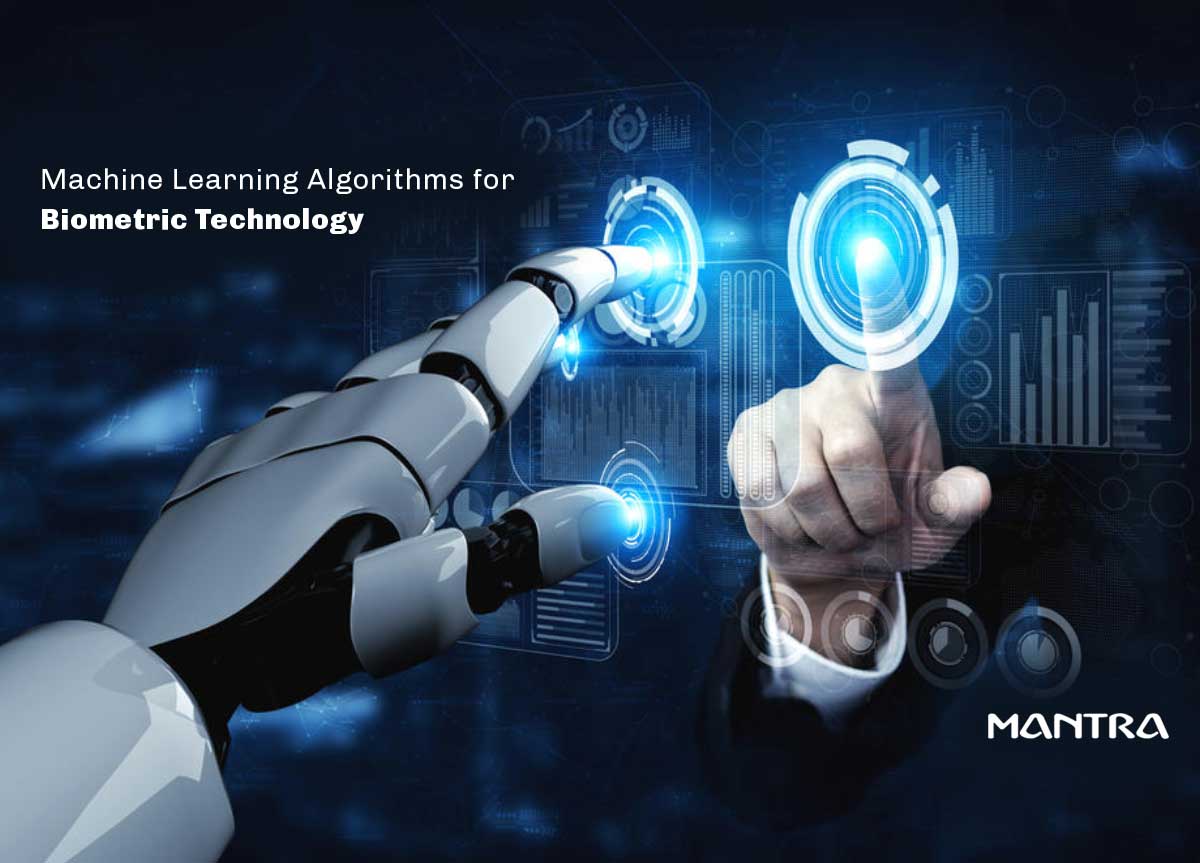
We are currently living in the era of Artificial intelligence, Machine learning and big data analytics, where advanced and smart computers have already replaced a great portion of manual work.
Did you know that machine learning and artificial intelligence are quite different, even though people usually use it as a synonym for each other?
"Artificial Intelligence is a technology which creates intelligent systems that imitate human intelligence such as learning and problem-solving."
"Machine learning is a sub-domain of artificial intelligence, wherein machines learn from past data or experiences without being concretely programmed"
While AI aims to create smart computers like humans for problem-solving, Machine learning aims to enable machines to learn from past data and give accurate outputs.
Application of Machine learning algorithms in Biometric systems
We already know ‘Biometric technology’ is a real-time system that verifies an individual’s identity by using their unique characteristics such as fingerprint patterns and facial geometrics. Let us understand how the integration of machine learning with biometric technology has revolutionized the tech world.
Machine learning uses a huge amount of structured data so that it can generate results or give predictions based on the given data. Currently, Machine learning is being used in Google search algorithms, spam mail filter, Facebook friend suggestions and online shopping recommendations.
Machine learning approaches aid in identification, recognition functions, classification which is required for the development of biometric systems.
Machine learning approaches can be divided into three types :-
Supervised learning
Unsupervised learning
Reinforcement learning
Supervised learning in biometrics
Supervised learning has been helping several biometric applications through a large number of algorithms. Some of the algorithms are Convolution neutral nets, Kernel Methods, logistic regression and Decision trees.
Facial recognition uses the ‘Decision trees’ algorithm for the accurate face recognition biometrics, and the latest surveys show that it gives 100% accuracy on the Facial Recognition Technology Database (FERET). Speech emotion recognition uses ‘Support Vector Machines (SVM)’ algorithm and the ‘Kernel Method’ approach is used for facial emotion recognition. The classifier can recognize up to 6 facial emotions with an efficiency rate of 98.6% on the JAFFE database.
Unsupervised learning in biometrics
Unsupervised machine learning implemented in biometrics ensures better learning methods, allows better classification and the accurate positioning of biometric features. Unsupervised learning can be used for extracting the full automatic finger vein pattern. However, it can only be used in the preliminary stage for better learning strategy definition, feature fusion and data analysis etc.
A clustering Algorithm named ‘nearest neighbor clustering algorithm’ was proposed by Vlachos and Dermatas for retina pattern matching and it has been successfully used for retina vessel segmentation. Unsupervised learning algorithms were also used for voice activity source detection and the clustering algorithm was used to extract the biometric voice features from energy signals.
Reinforcement Learning
The third approach i.e. the reinforcement learning is way more versatile than supervised and unsupervised learning approaches. Reinforcement learning is a powerful machine learning approach which methodically learns to perform a task and trains the algorithms by using a system of reward and punishment.
There are software agents who receive rewards after performing a function accurately and penalties for an inaccurate performance. The agent is programmed in such a way that it does not require any human intervention. Reinforcement learning focuses on action followed by improved performance, or else the action is not taken into practice again. There are a few limitations to reinforcement learning as of now, which can be resolved through deep reinforcement learning (DRL).
According to studies, it has been noted that the fusion of machine learning algorithms with biometrics has provided better biometric accuracy compared to conventional methods. Despite their success in various aspects, they are still under speculation before they are applied to more complicated world issues.
Brij Bhushan
Hi Arjun, It is very nice to read here that machine learning is impacting biometric technology.I would like to appreciate your information. I found it very interesting and grateful thanks for sharing this with us.
ReplyBrij Bhushan
Amazing article. Your blog helped me to improve myself in many ways thanks for sharing this kind of wonderful informative blogs in live. I have bookmarked more article from this website. Such a nice blog you are providing !
ReplyJohn Jone
I have read this post. Its so nice and very informative! thanks for sharing! Your website and blog is awsome!!!
Reply